- 注册
- 登录
- 小程序
- APP
- 档案号


MVRDV · 2025-07-26 17:51:11
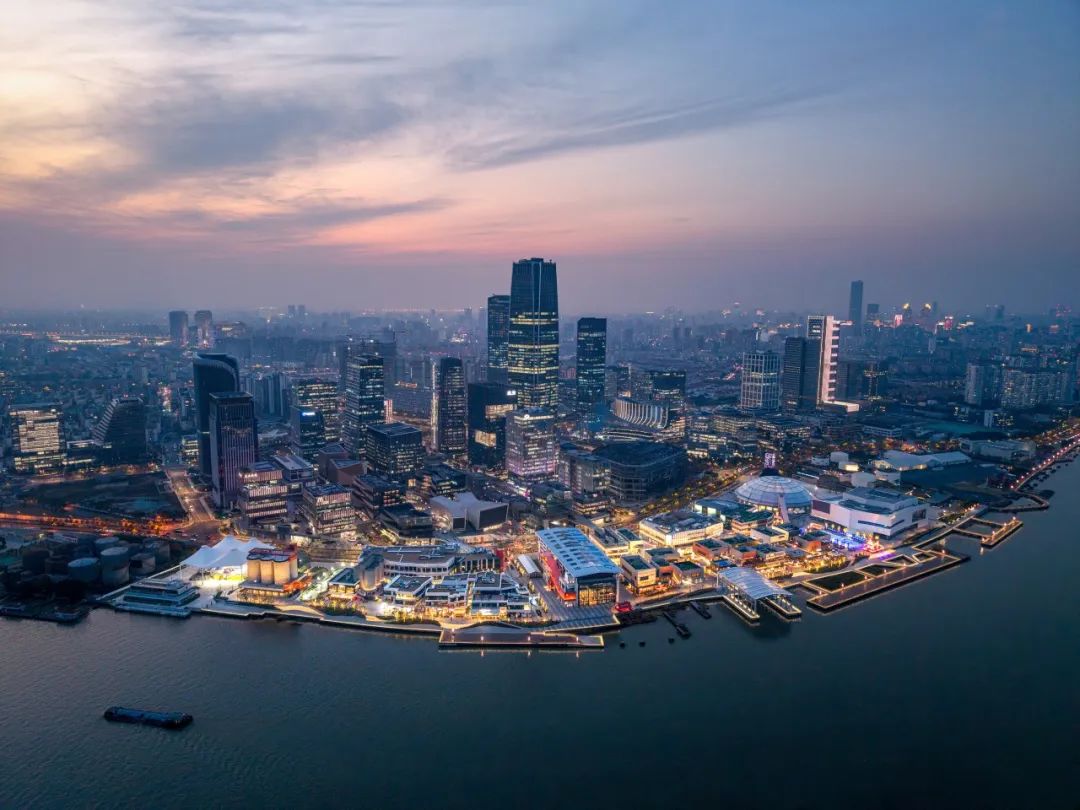
© 三千影像
MVRDV 完成了GATE M 西岸梦中心的改造,将一座昔日的水泥厂升级成为滨江文化休闲区,为上海不断生长的西岸文化区增添新的亮点。MVRDV 将不同时期的建筑组合成一个具有凝聚力的城市空间,重新利用现有建筑以最大限度地减少碳排放,并以亮橙色的动线元素打造出独特的个性空间。人们可以享受河畔轻松的漫步时光,也可以体验梦中心提供的购物、餐饮、滑板、攀岩、参观展览和活动等丰富多样的业态。这里已经成为上海市民和游客首选的热门目的地之一,并获得了诸多奖项殊荣。
MVRDV has completed the GATE M West Bund Dream Center, transforming a former cement factory into a culture and leisure district that adds to Shanghai’s expanding string of West Bund cultural projects. The design makes a cohesive urban space out of a collection of buildings from different time periods, reusing the existing structures to minimise carbon emissions, and introducing an unmistakeable identity with its bright orange circulation elements. Offering possibilities for shopping, eating, drinking, skateboarding, rock climbing, and visiting exhibitions and events – or simply relaxing by the riverside – the area has already become an award-winning and popular destination for Shanghai residents and visitors alike.
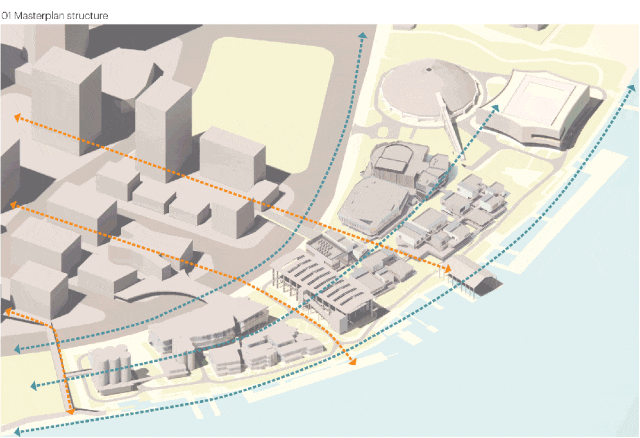
场地的布局围绕构成主要公共区域的几条关键轴线,中央轴线贯穿梦中心南北两端,是平面中最重要的主动线。MVRDV在总体规划中置入了一组立体步道系统,贯穿各个建筑的不同楼层,激活了屋顶空间、连接江岸的一系列露台以及楼梯和电梯网络,采用了鲜亮的橙色,让活力的脉络延伸至场地的各个角落
The site is organised around key axes that form the primary public areas, with landscape designs provided by James Corner Field Operations. The most important of these axes is a central spine forming the main route from one end of the site to the other. The masterplan’s defining element, however, comes in how it uses different levels, with activated rooftops, a series of elevated terraces by the riverbank, and a network of staircases and elevators creating a three-dimensional promenade that permeates the site with its eye-catching orange colour
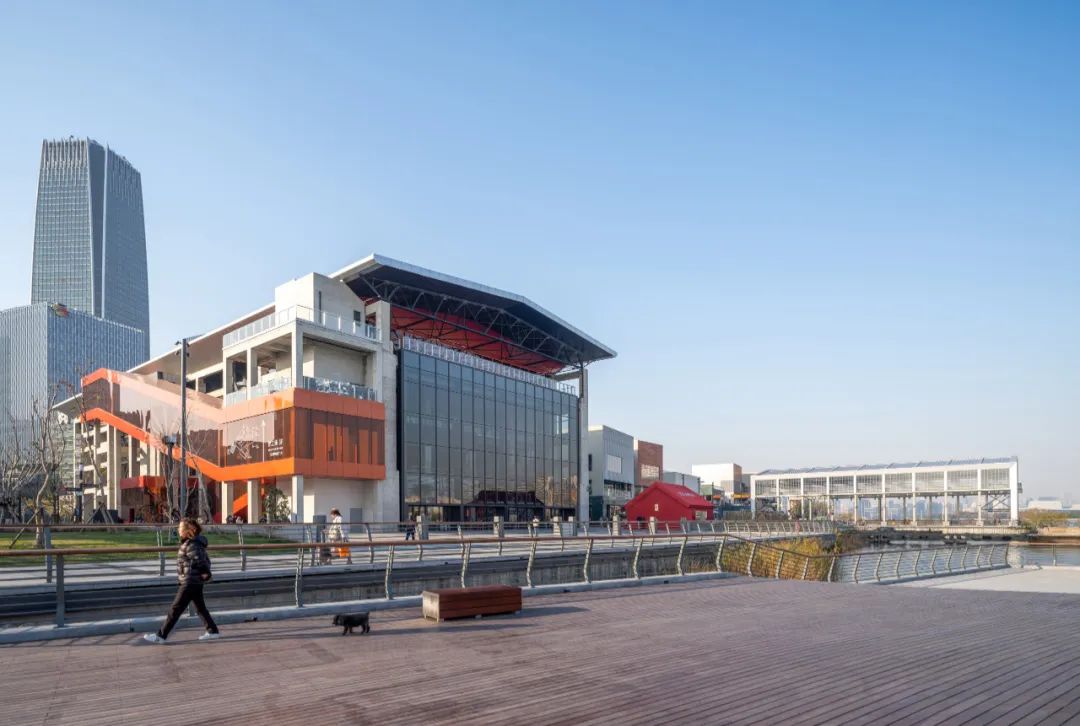
© 三千影像
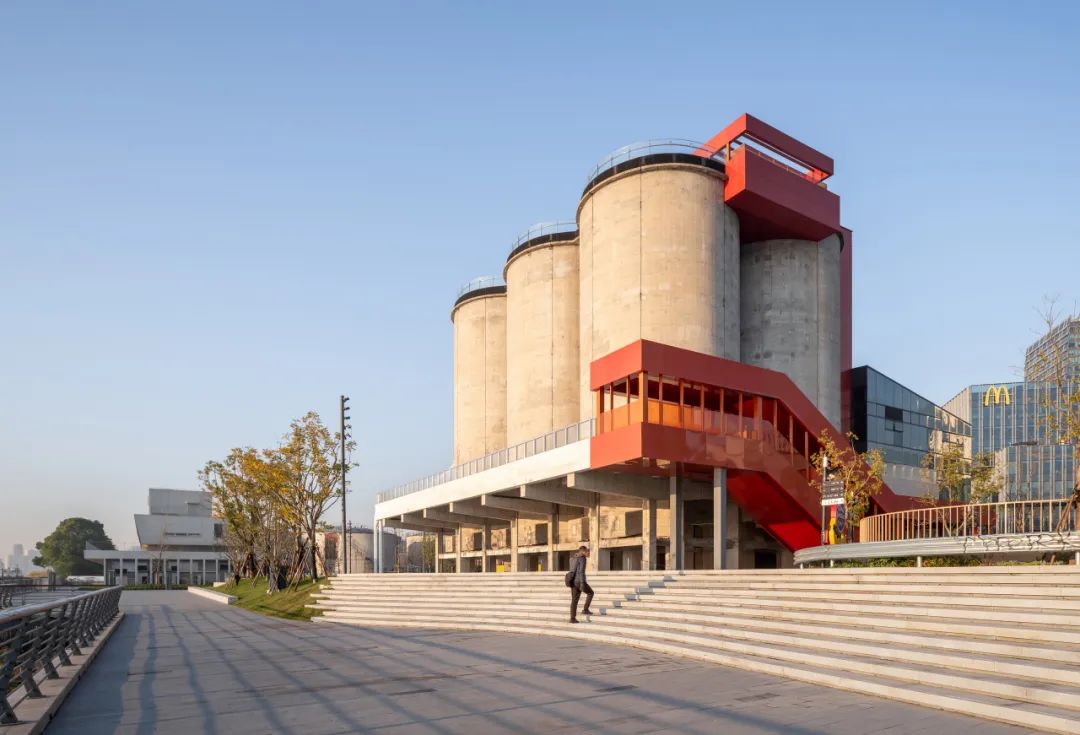
© 三千影像
GATE M 西岸梦中心的所在地曾是远东第一大水泥厂的旧址。适逢2010年上海世博会,水泥厂及沿江其他的工业功能实现动迁,滨江空间逐步从生产型岸线向生活型岸线转型,更多面向公众开放。在MVRDV启动改造设计之前,项目基地糅杂着两组截然不同的建筑:前身作为上海水泥厂遗留下来的大型工业建筑群,和上一轮改造计划中新增但未能完成的建筑群。
The site of the GATE M Dream Center was once home to the Shanghai Cement Factory, at one time the largest cement factory in Asia. The 2010 Shanghai Expo provided the catalyst for the city to relocate the factory, along with other industrial functions in this part of the city, and to make the banks of the Huangpu River accessible to the city’s residents. Before MVRDV’s transformation, the site was home to two very different sets of buildings: a handful of large industrial structures provided reminders of the area’s history, while the in-between spaces hosted unfinished constructions from a prior development attempt that never came to fruition.
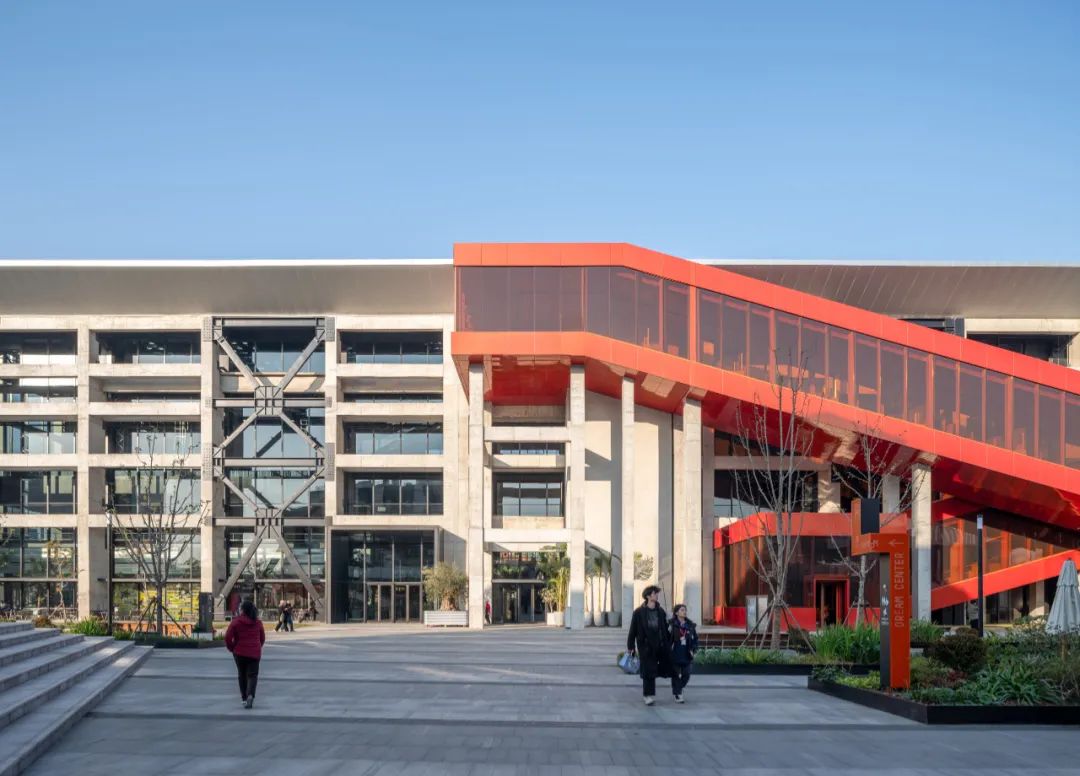
© 三千影像
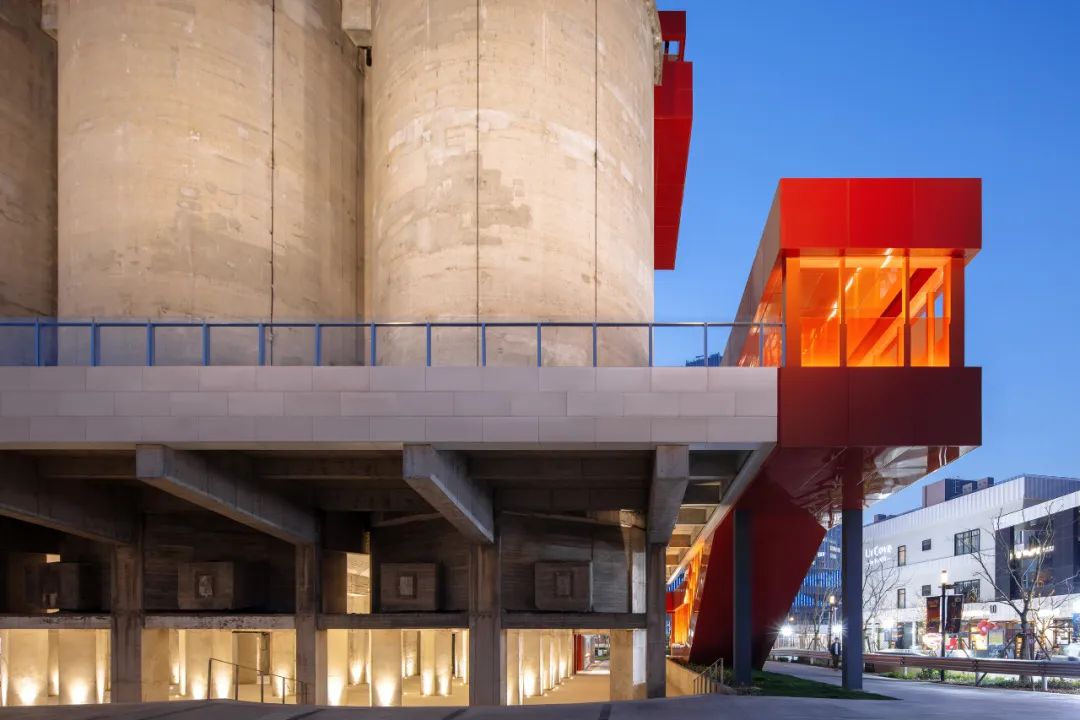
© 夏至
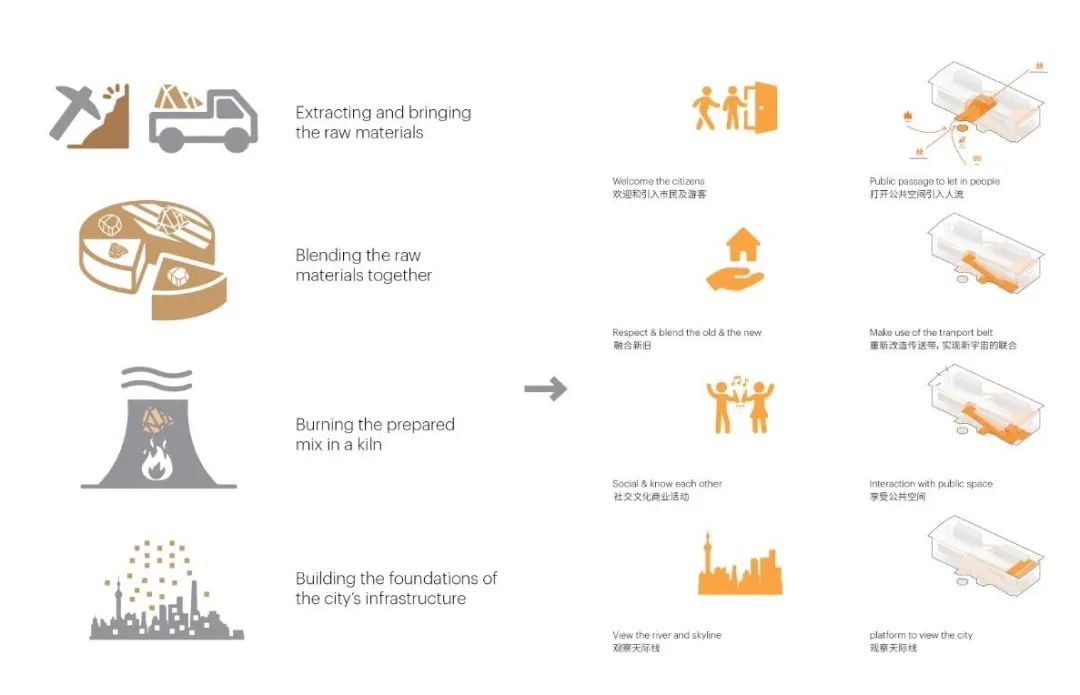
从基地的历史背景中汲取灵感,MVRDV以移动和传输作为概念的内核——过去,水泥厂厂区围绕着水泥生产材料的传输进行组织布局;如今,它将以同样高效的布局引导人群的自由流动
Taking inspiration from the site’s history, movement was a key principle of the design – in the past, the area was organised around the movement of raw materials for cement production; in the future, it will enable the free movement of people with just as much efficiency
MVRDV 完成了 GATE M 西岸梦中心的总体更新规划,同时负责南部现存建筑的改造,其中包括整片地块的核心建筑,即前水泥厂遗留下来的废料仓库,现为「梦工场」。北区则由大舍建筑设计事务所负责商业建筑的改造,和SHL建筑事务所改造的西岸穹顶艺术中心,以及全新设计完成的上海西岸大剧院。
MVRDV designed the masterplan for the entire Dream Center site, and also created the architectural designs for the southern half of the site, including the centrepiece, the M Factory. The commercial buildings in the northern part of the site were elaborated by Atelier Deshaus, while Schmidt Hammer Lassen designed the West Bund Dome Art Centre, and the new Shanghai West Bund Theatre at the site’s northern end.
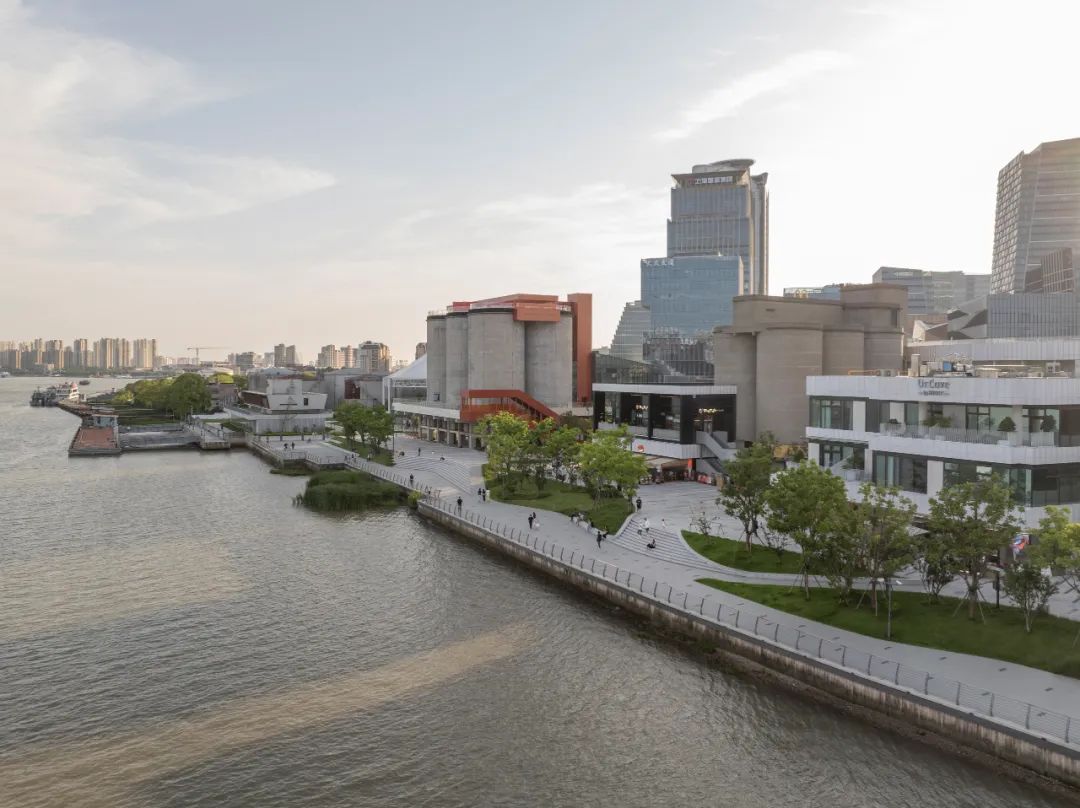
© 田方方
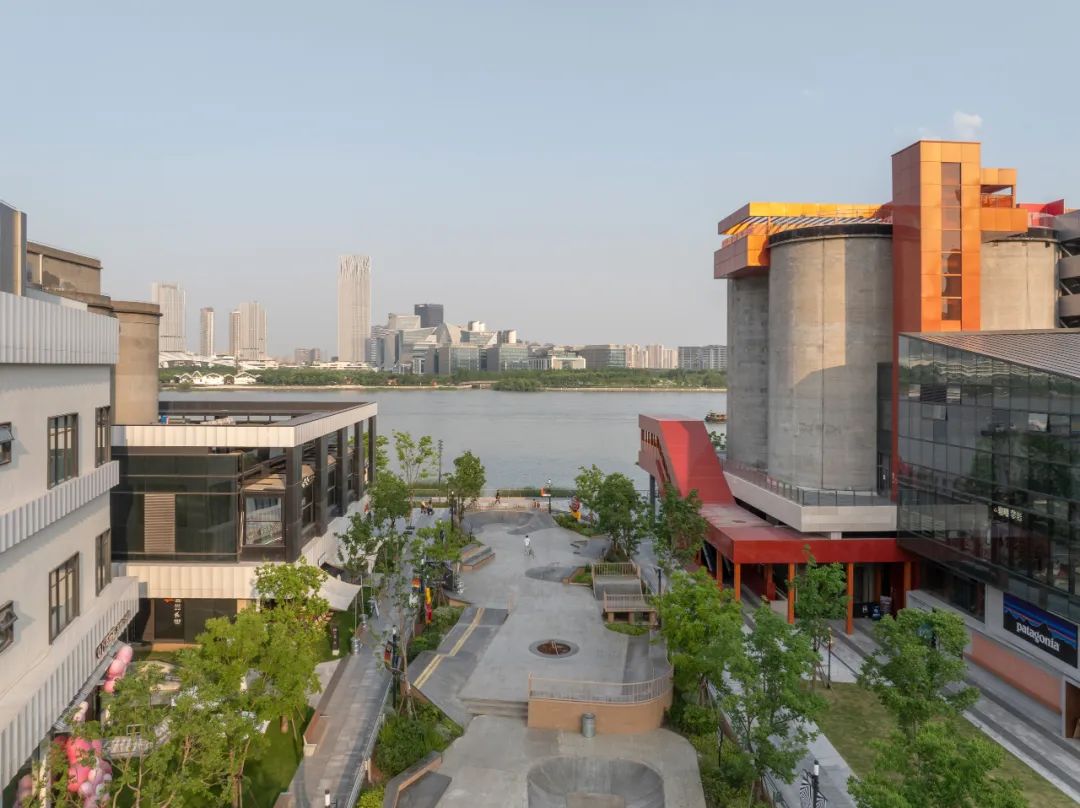
© 田方方
MVRDV 在设计中充分考虑了场地的所有历史元素,最大限度地减少了拆除和新建所产生的碳排放和废料。
In their design, MVRDV opted to work with all of these elements of the site’s history, minimising the carbon emissions and waste materials associated with demolishing and rebuilding the structures.
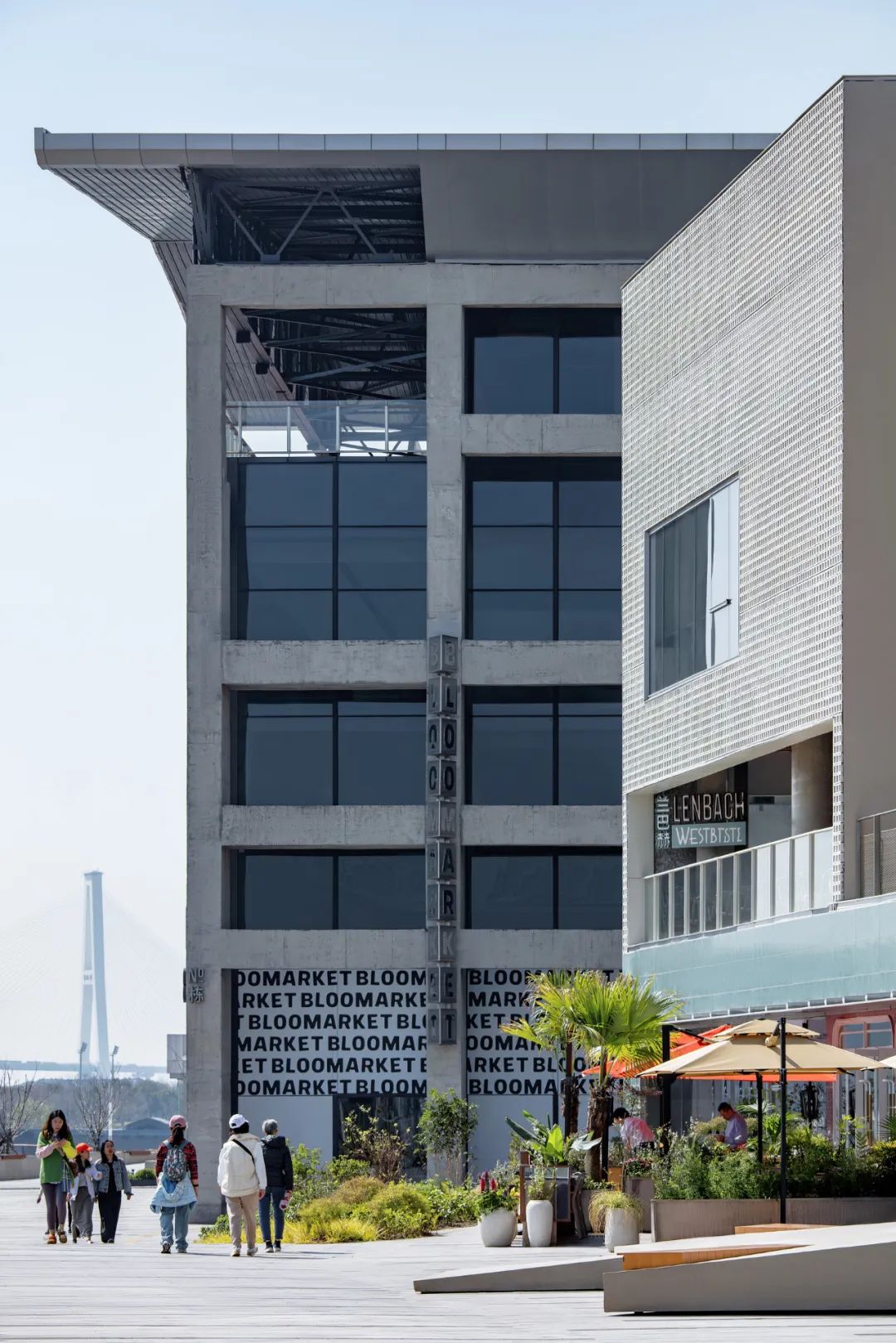
© 夏至
“我们从一开始就认识到原有建筑的巨大潜力,如果仅仅是为了省事而全部拆除,那意味着更多的碳排放和浪费,”MVRDV 创始合伙人Jacob van Rijs 说道。“我们面临的挑战是如何将这些不同时代的碎片整合在一起,让原本突兀的组合成为一个整体。我们把未完成的新增建筑变成了背景,让遗留的工业巨擘成为亮点,并利用其独特的结构特点,打造出激动人心的空间和功能。”
“It was clear from the start that there was a lot of value leftover in the buildings that were already there – we didn’t want to demolish things just because it might be simpler, because that means more carbon, more waste”, says MVRDV founding partner Jacob van Rijs. “Our challenge was to bring these pieces together and make them work as a single area, because they were an awkward pairing. We turned the newer buildings into the backdrop, so that the industrial behemoths could be the exclamation points, with exciting functions that capitalise on their special structural features.”
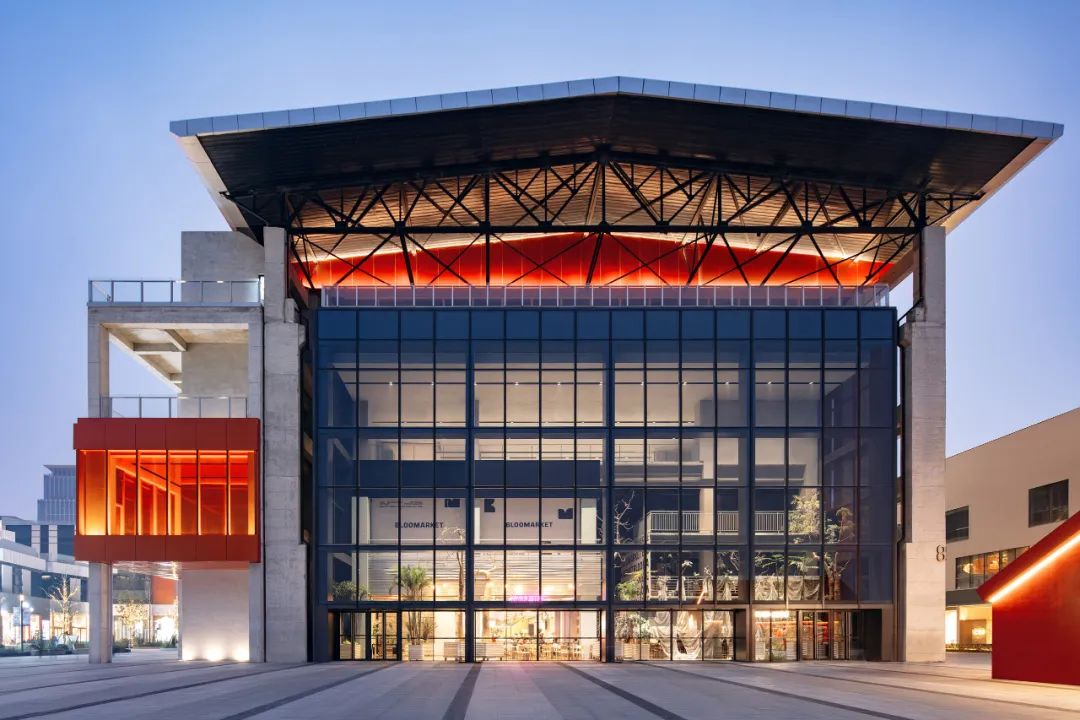
© 夏至
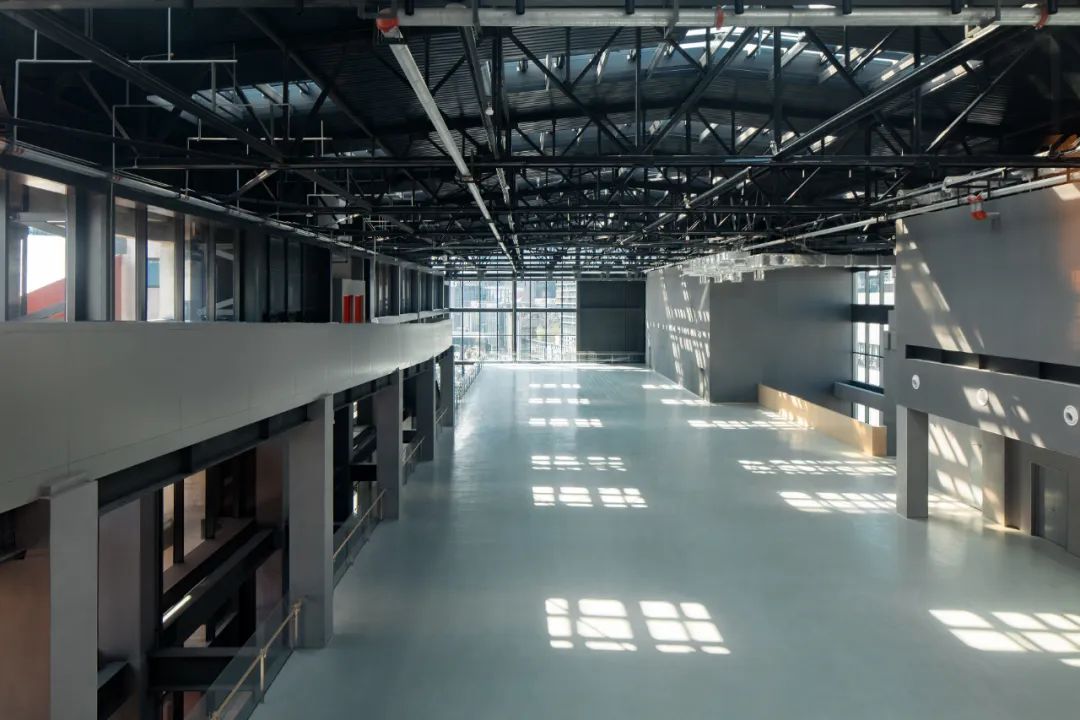
© 夏至
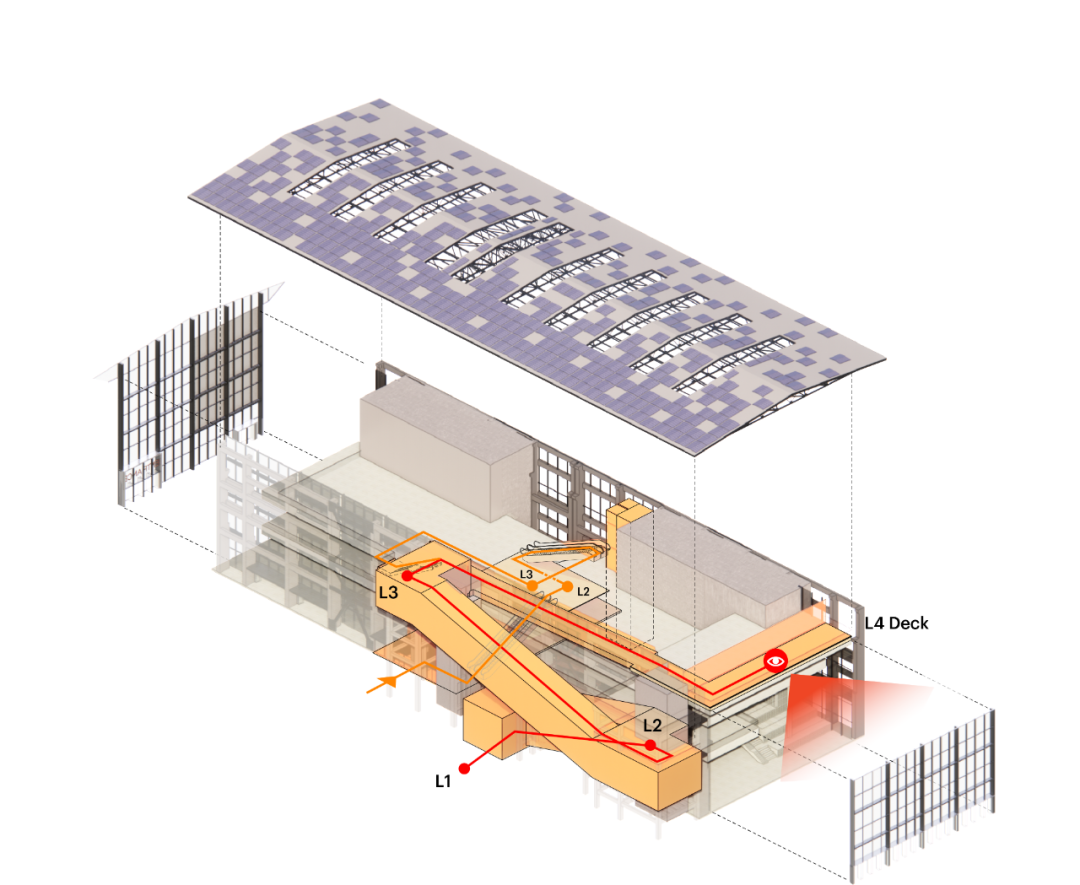
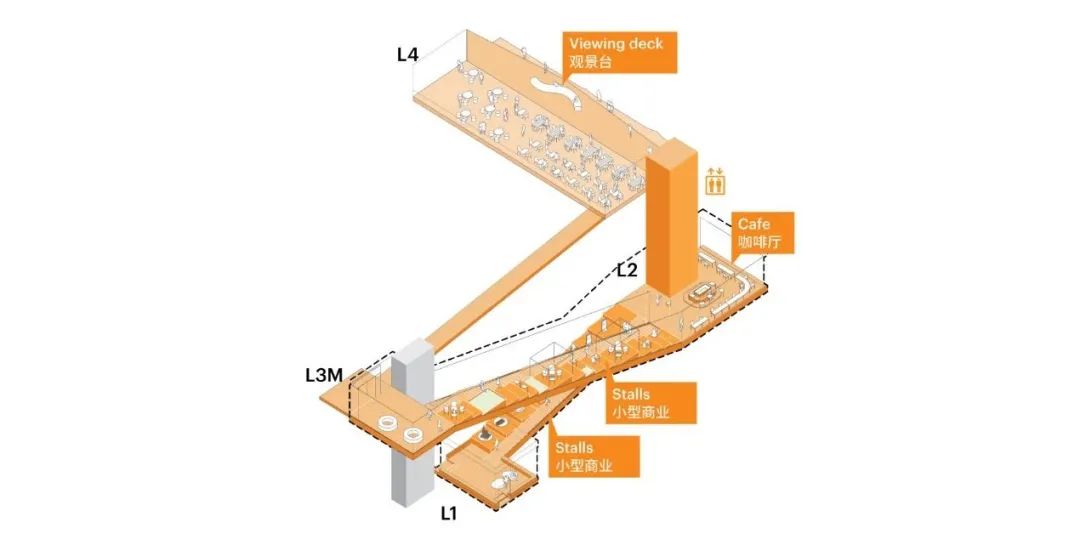
梦工场橙色动线分析图
diagrams of M Factory
场地遗存的工业筒仓和厂房也成为梦中心的焦点。这些原始的、巨大的混凝土结构具有强烈的历史感和标志性,MVRDV在筒仓外部增加了亮橙色楼梯和电梯,强化了建筑的吸引力。体量庞大的「梦工场」空间在地面层引入了创意餐饮品牌BLOOMARKET,其中包括一个休闲餐饮市集和若干家高级餐厅;人们可以从曾经的仓库传送带改造而成的橙色楼梯拾级而上,到达中间层的大型无柱文化空间,这里日常用于举办展览、会议、时装秀和舞台表演等各种活动。同时,大型筒仓结构的内部空间已被改造成攀岩馆,筒仓外部增加了橙色的动线空间,引导人们前往屋顶的观景台和一楼的阳台。
The remaining industrial silos and factory buildings form the focal points of the new zone. These raw, monumental concrete structures bring a clear sense of history and identity, made more striking by the addition of bright orange staircases and elevator shafts to their exteriors. On its lower floor, the massive M Factory building hosts BLOOMARKET, which combines a food market and a fine dining experience, while the upper floor – accessible via an orange staircase created from what was once a conveyor belt – hosts a large, column-free cultural space that can be used for anything from exhibitions and conferences to fashion shows and stage performances. Meanwhile, the large silo building has been converted internally to become a centre for rock-climbing, with orange routes on the exterior that invite people to viewing platforms on the roof and a first-floor balcony.
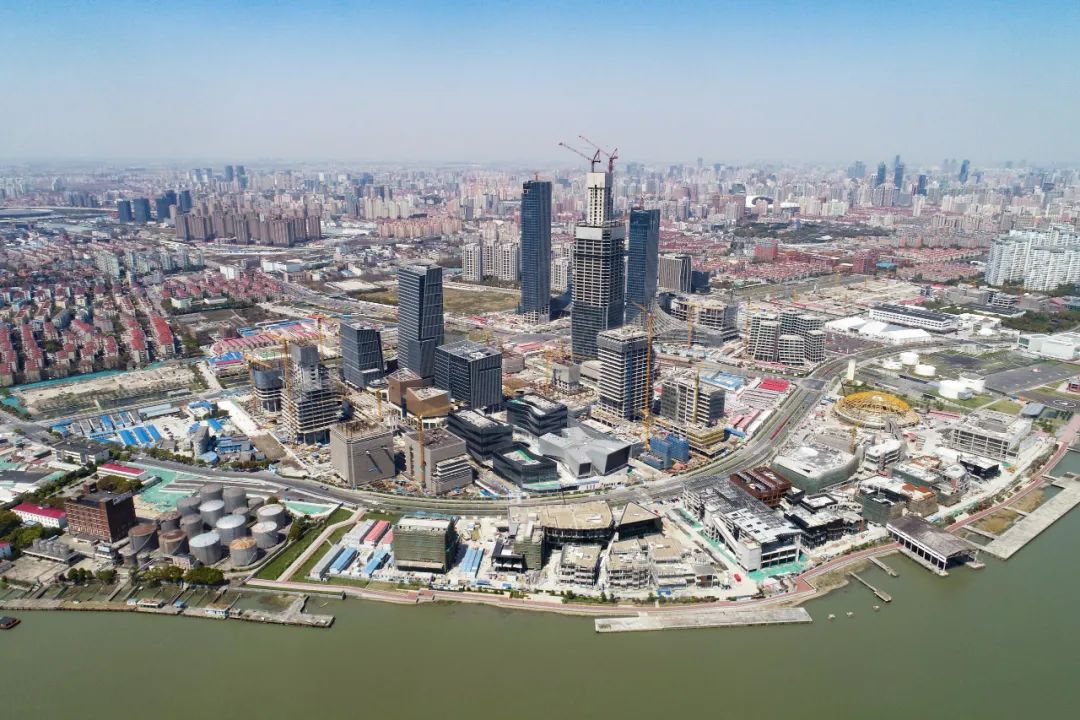
在MVRDV着手更新规划之前,项目基地是一片大规模的工业遗存和其间在若干年前改造时未完成的新增结构
Before MVRDV's transformation, the site was home to a handful of large industrial structures with unfinished constructions from a prior development attempt in between
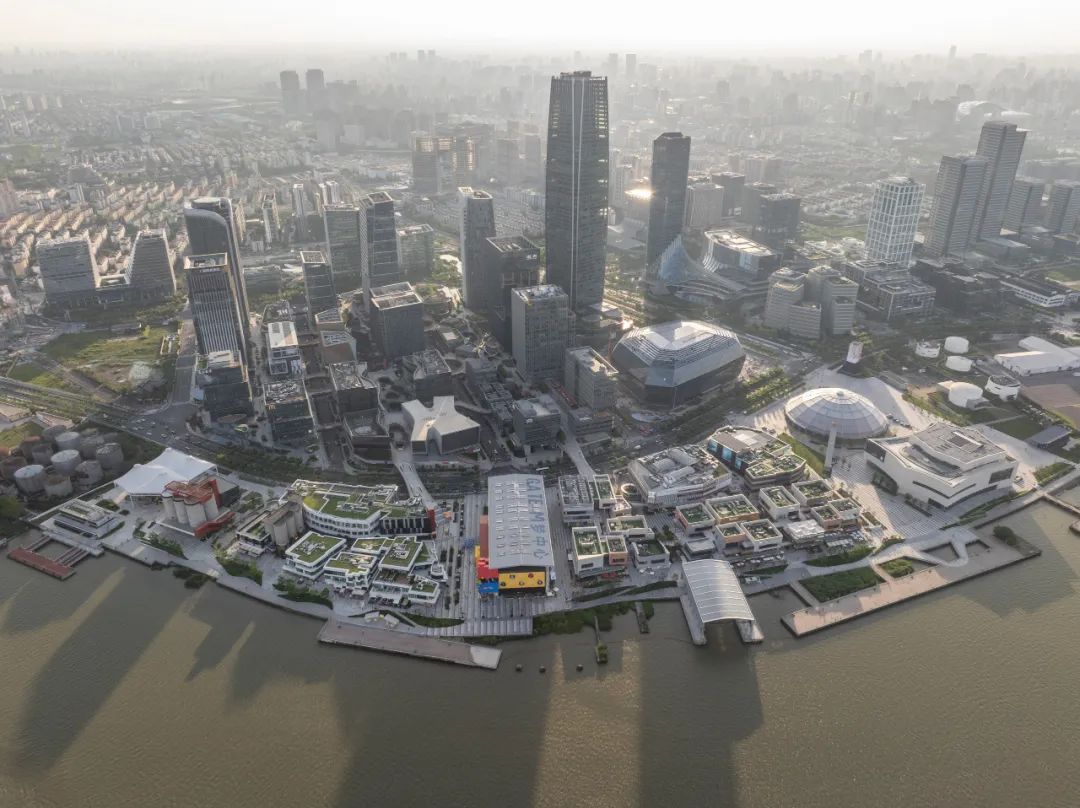
© 田方方
在这些标志性的工业遗存建筑之中,穿插着若干年前改造过程中未完成的新增建筑,这一部分“旧建筑”已被改造成商店、餐厅和酒店,MVRDV为其赋予中性色调的立面、绿色屋顶和户外露台。它们共同构成了一个充分利用滨水景观的公共空间。景观设计由 James Corner Field Operations 负责。
Around these enigmatic industrial buildings, the more recent unfinished structures have been completed as shops, restaurants, and hotels, with neutral façades, green roofs, and outdoor terraces. They define a public space that capitalises on its waterfront location, with a landscape design by James Corner Field Operations.
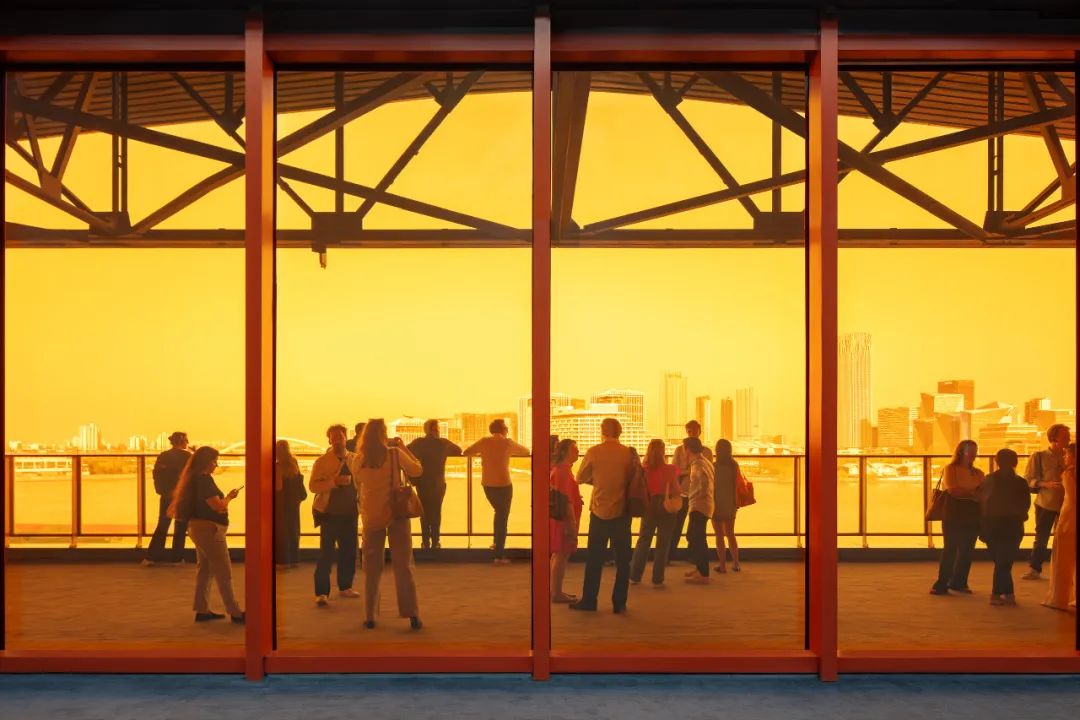
© 夏至
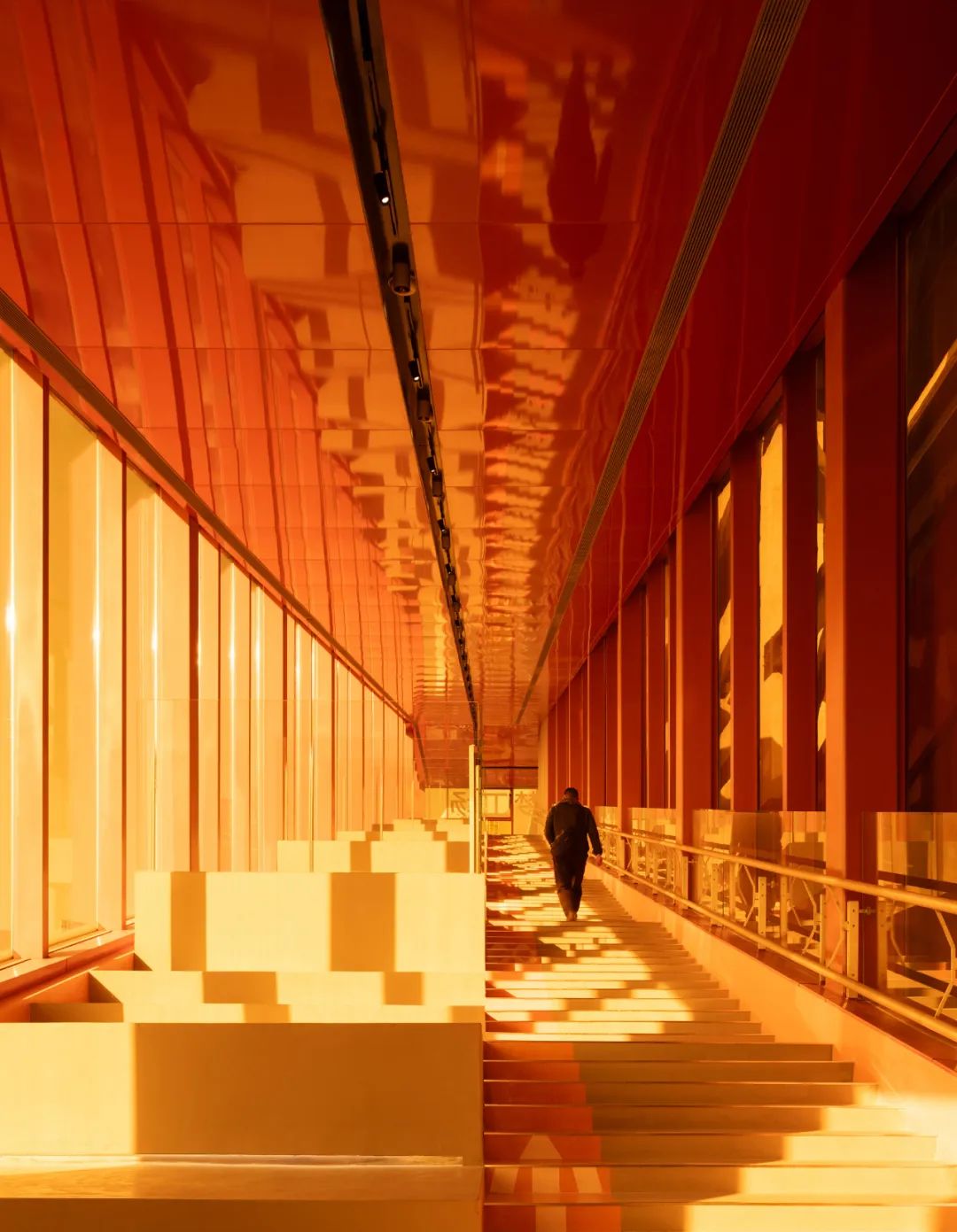
© 三千影像
GATE M 西岸梦中心为滨江区域带来充满活力的公共空间,自开放以来已成为热门的文旅目的地。透过「梦工场」如广告牌一般的巨大落地窗,人们自然而然被室内的丰富活动吸引。自开放以来,GATE M 西岸梦中心已荣获「首届上海城市更新优秀实践案例」、「2024中国城市更新最佳城市表率案例」和「IDEAT 理想家中国未来大奖最佳商业建筑大奖」等诸多殊荣。它的成功转型为我们带来了一个直接的答案:城市的更新迭代或许根本不需要建造太多的新建筑。
Providing an active and exciting public space on this part of the riverbank for the first time, the GATE M Dream Center has already proven a popular destination, attracting around 50,000 visitors daily, and the huge frame of the M Factory has served as an ideal billboard for attracting people to the events taking place inside. The success of this transformation has already helped propel the project to award wins in the China Urban Renewal Annual Award, the Shanghai Excellent Urban Regeneration Projects Awards, and the IDEAT China Future Awards – clearly demonstrating that to emphatically renew our cities, we may not need to build many new structures at all.
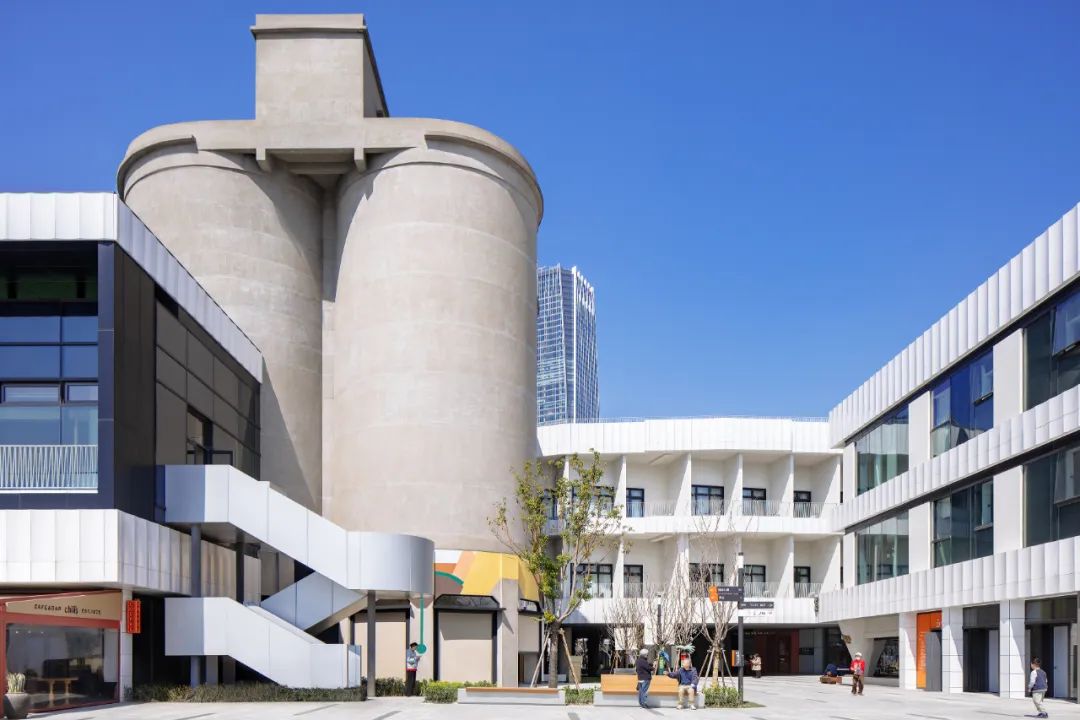
© 夏至
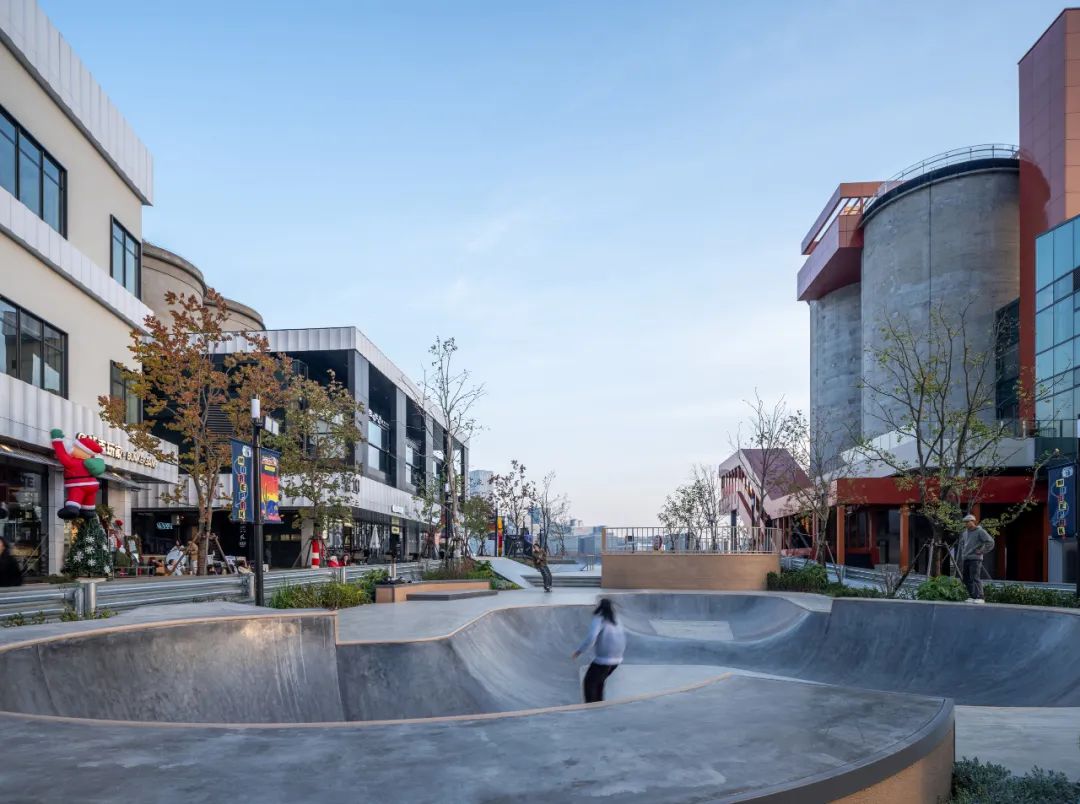
© 三千影像
GATE M 西岸梦中心代表了全球城市正在普遍经历的变化趋势——昔日的工业遗产正逐步被扩张的城市吞并,必须适应新的城市环境。在世界各地,不断发展的城市正在重新思考如何为工业建筑赋予新的用途,从孤立的工业区转变更加繁荣友好的社区。MVRDV的诸多项目都反映了这一发展趋势:目前正在改造位于中国杭州和葡萄牙波尔图的炼油厂,还有位于荷兰北部的一座钢铁厂改造。MVRDV曾经完成了丹麦摇滚博物馆,将一片水泥工厂改造为文化教育园区,其中包括丹麦罗斯基勒音乐节高等学校、摇滚音乐和青年文化博物馆。这些项目都展现了对工业遗存的创造性再利用,以及为城市环境及其周边社区带来的价值。
The GATE M Dream Center is an example of a broader global trend in which former industrial sites are absorbed by the expansion of cities and must adapt to their new urban contexts. Around the world, growing cities are rethinking how industrial structures can be transformed to serve new purposes and become better neighbours as they shift from isolated industrial estates to thriving neighbourhoods. MVRDV’s portfolio reflects this development: the firm is currently working on transformations of an incinerator, of oil refineries in Hangzhou and Matosinhos, and has proposed a vision for a steel factory near IJmuiden. Past projects include the Rockmagneten masterplan, which turned a concrete factory into a cultural and educational campus including the Roskilde Festival Højskole and the Ragnarock museum of pop, rock, and youth culture. Each of these projects demonstrates the value that creative reuse can bring to both the urban environment and the communities around it.
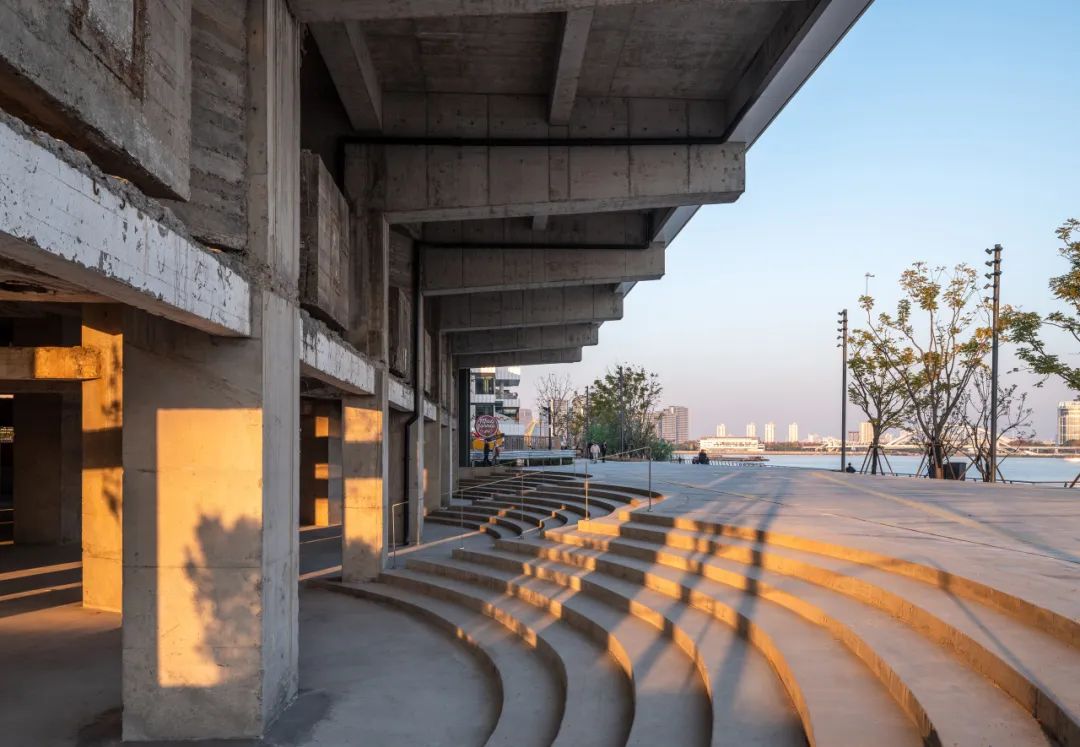
© 三千影像
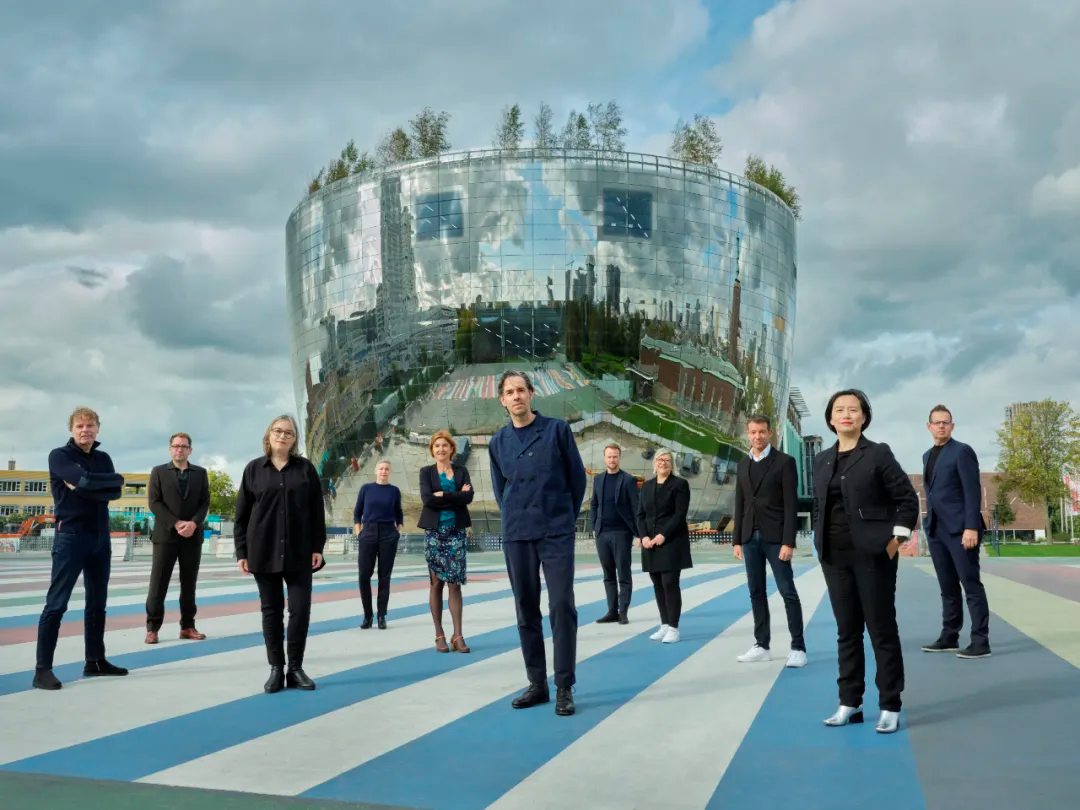
MVRDV建筑规划事务所由Winy Maas、Jacob van Rijs和Nathalie de Vries创立于荷兰鹿特丹,致力于为当代的建筑和都市问题提供解决方案。MVRDV的创作基于深度研究与高度协作,各领域的专家、客户及利益相关方从项目初期一直参与设计的全过程。直率而真诚的建筑、都市规划、研究和装置作品堪称典范,让城市和景观朝向更美好的未来发展。
MVRDV的早期项目,如荷兰公共广播公司VPRO的总部,以及荷兰阿姆斯特丹的WoZoCo老年公寓,都获得了广泛的国际赞誉。MVRDV250余位建筑师、设计师和城市规划师在多学科交叉的设计过程中,始终坚持严格的技术标准和创新性研究。MVRDV采用BIM技术,公司内拥有正式的BREEAM和LEED顾问。MVRDV与荷兰代尔夫特理工大学合作运营独立智库和研究机构The Why Factory,通过展望未来都市,为建筑及都市主义提供发展议程。
MVRDV was set up in 1993 in Rotterdam, The Netherlands by Winy Maas, Jacob van Rijs and Nathalie de Vries. MVRDV engages globally in providing solutions to contemporary architectural and urban issues. A research-based and highly collaborative design method engages experts from all fields, clients and stakeholders in the creative process. The results are exemplary and outspoken buildings, urban plans, studies and objects, which enable our cities and landscapes to develop towards a better future.
Early projects by the office, such as the headquarters for the Dutch Public Broadcaster VPRO and WoZoCo housing for the elderly in Amsterdam lead to international acclaim. 250 architects, designers and other staff develop projects in a multi-disciplinary, collaborative design process which involves rigorous technical and creative investigation. MVRDV works with BIM and has official in-house BREEAM and LEED assessors. Together with Delft University of Technology, MVRDV runs The Why Factory, an independent think tank and research institute providing an agenda for architecture and urbanism by envisioning the city of the future.
特别声明
本文为自媒体、作者等档案号在建筑档案上传并发布,仅代表作者观点,不代表建筑档案的观点或立场,建筑档案仅提供信息发布平台。
18
好文章需要你的鼓励

 参与评论
参与评论
请回复有价值的信息,无意义的评论将很快被删除,账号将被禁止发言。
 评论区
评论区